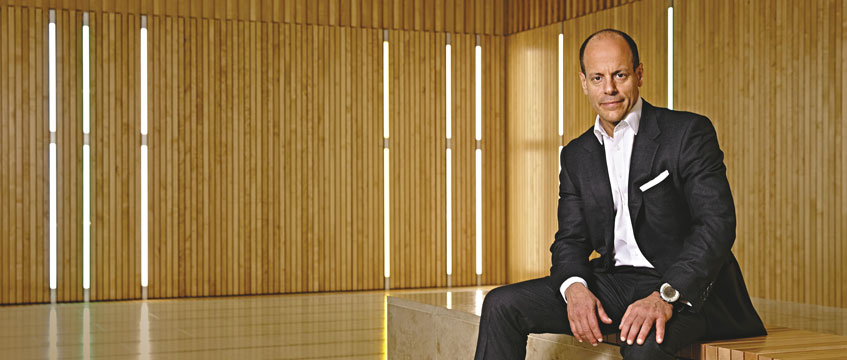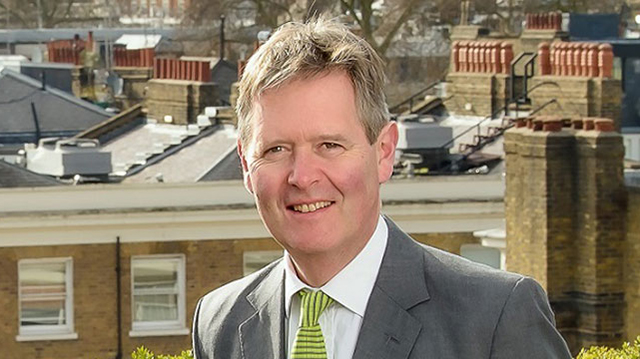Germany’s closed-end funds have invested nearly double the amount held by their better known open-end cousins. The US has been a big market for these vehicles, but they are also hoping to benefit from corporate and state property sales in Europe
Open-ended funds may garner all the headlines with their ambitious acquisition programmes, but according to independent German property fund expert Stefan Loipfinger, a closer eye should be kept on their closed-end cousins. “Open-ended funds are much more in the public eye, but closed-end fund managers have so far invested nearly €160bn, compared to the €85bn held by open-ended funds,” he says.
Loipfinger’s research reports that around €11.2bn was tucked away into closed-end property funds last year. Overall, sponsors of such funds generated equity contributions of €4.8bn. Like the open-ended funds, closed-end funds are aimed at the general public, albeit catering for customers who are able to exploit certain tax advantages by investing amounts of between €10,000 to €50,000.
Until the late 1990s, the industry was driven by the tax benefits it enjoyed. The removal of those benefits has led sponsors to shift their focus to the merits of property. But managers still need a favourable tax angle to tempt investors. Hence in their search for new products and markets, sponsors first looked for opportunities in countries that have favourable double tax treaties with Germany.
Fund managers are also adding corporate property to their shopping list. The US will remain an important market, while some players are looking to central Europe.
In Germany, corporate disposals are expected to become an important source of investments for the fund managers. Deutsche Telekom, Deutsche Bundespost and perhaps Deutsche Bahn are expected to provide interesting opportunities to buy property, but Loipfinger advises caution on the suitability of such assets. “Bank-related sponsors, which are now the largest group of sponsors, tend to view covenant strength as paramount, sometimes at the expense of other considerations such as a secondary location or the dominating size of a particular building in the sub-market.”
HGA Capital sees corporate property as an interesting investment proposition and has launched a fund for an asset sale by Deutsche Telekom, while Munich-based Falk Capital has struck a sale-and-leaseback deal with utilities group RWE for a 67,000m2 office building in Essen.
International investment by closed-end funds, which was introduced in the 1970s, was mainly directed at the US. Since then they have attracted many investors and at the end of last year fund managers made accumulated investments of €22.6bn. “Last year’s €1.6bn in equity commitments was the second highest, but is 25% down on 2002,” says Loipfinger. “Many managers cite a lack of suitable investments in US markets as the main reason for this fall.”
Two market-leading managers of funds targeting the US are Jamestown, which has offices in Atlanta and Cologne, and Munich-based KanAm group. Jamestown is celebrating its 20th anniversary by preparing to launch its 25th US property fund, which will have a $1bn investment portfolio spread across four properties.
The new fund’s largest interest will be a 70% stake in New York office block 111 Eighth Avenue – at 240,000m2, Manhattan’s third largest building – which accounts for 57% of the portfolio. The other three investments are a mixed-use San Francisco scheme, an Atlanta office complex housing IBM’s regional headquarters, and the Ritz-Carlton hotel in Key Biscayne, Florida.
German investors in US funds are not put off by currency fluctuations. “US dollar denominated funds are an integral part of a diversification strategy for many of our investors,” says Mario Liebermann, managing director at DB Real Estate.
Closed-end fund managers tend to look for commercial properties, with a strong bias to office and shopping malls. HGA Capital, however, has introduced a fund which will invest exclusively in housing stock.
“A growing population makes this segment a very attractive investment,” says Dr Joachim Seeler, managing director at HGA Capital, a subsidiary of HSH Nordbank in Hamburg. “We are looking for low-rise housing estates with 350 to 400 homes, on the east coast, from Boston to Florida.” To manage the property the fund manager has joined forces with Alliance Inc, which owns more than 60,000 homes.
Few players have attempted to branch out into new European markets. But Dutch funds have been popular, and had a total investment value of €637m last year. More recently, Austrian funds have come to the fore. The largest Austrian fund was launched last year by Hamburg-based MPC Münchmeyer Petersen Capital, which raised €146.5m to fund the 38,300m2 Millenium office tower in Vienna. This fund accounted for more than half of all Austrian funds, which totalled €798m.
DB Real Estate was one of the first fund managers to venture into central Europe. First, it structured a fund to finance a Budapest office and retail scheme, developed and managed by ECE Projektmanagement, Germany’s largest shopping centre manager. This fund offers investors a projected annual return of 7.4% after tax. The second fund invested in a 40,000m2 shopping centre in the Polish city of L¢dz, also managed by ECE.
For HGA Capital, central Europe also offers investment potential, notably in Hungary, Poland and the Czech Republic. “In these markets we focus on retail development,” says Seeler. “Our first fund, launched last year, bought a shopping centre in Pécs.” The 40,000m2 Pécs Arkád was developed, and will be managed, by ECE. Hungary’s low tax rate will give investors a projected annual return of 8%. The fund has an investment value of €25.1m.
The fund manager is also structuring a fund to finance the development of a 37,000m2 ECE shopping scheme in Brno, the Czech Republic’s second largest city. Investors will not incur a currency risk, as the fund and lease agreements will be denominated in euro. The centre is due to be completed at the end of 2005. HGA also plans to buy the 38,600m2 Arkády Pankrác Center in Prague, which is due to open in 2006.
Sachsenfonds, a subsidiary of Landesbank Sachsen, is also targeting central Europe. Its first fund is financing a 20,700m2 mixed- use project in Prague, comprising six fully let city-centre buildings. With leverage, the fund’s total capital will be €64m.
Managers targeting western Europe include IVG Immobilien subsidiary Wertkonzept, which has structured a fund including two German and one UK office buildings. The fund’s key attraction for investors was the buildings’ long-term leases. Wertkonzept expects the fund to have an initial return of 6.3%, which will be largely tax free, rising to 8%. It aims to raise €50m, and the fund will have a total investment value of €98m.
Banks gain more control of funds
With 56.1% of the total investment value, banks and financial institutions account for more than half of all closed-end funds. The market is undergoing consolidation, with 10% of the sponsors generating 58.7 % of the total funds. Six years ago the corresponding figure was 47.8%.
Fund managers have mostly concentrated on the domestic market, with 80% of closed-end funds invested in Germany. The sector has flirted with US funds, which account for more than half of new funds in recent years. But last year, sponsors returned to Germany, which attracted nearly 48.5% of the funds’ money, the US attracting 32.8%.
Having almost doubled its funds in 2003 to reach €1.9bn, Hamburg- based MPC Münchmeyer Petersen Capital takes the top spot in the sector. In addition to the funds it has invested in German property, the asset manager has sponsored deals in Austria, the Netherlands, and Canada.
DB Real Estate, the top fund in 2002, fell back to ninth in 2003, but this year Mario Liebermann is confident that the fund’s fortunes will improve: “There is strong interest for closed-end funds,” he says. “We will introduce a new European fund concept later this year and plan to launch funds with equity commitments in the order of €400m, which should secure us a position in the top three.”
One of the disadvantages of the closed-end structure is the lack of a secondary market. However, some fund sponsors are offering their investors a service allowing them to trade their units. For well- managed funds looking to achieve their projected returns, there are buyers, but hardly any sellers.
Previous funds were designed to run for 20 to 30 years, but as investors increasingly prefer shorter investment horizons, DB Real Estate is looking to devise new exit strategies. “We are likely to work on investment horizons of 10 to 15 years,” says Mario Liebermann.
|
Funds placed by closed-end fund sponsors, 1999-2003 |
||||||||||
|
MPCMünchmeyer Petersen Capital’s funds include the launch last year of a vehicle to invest in Vienna’s landmark Millenium Tower office scheme |
||||||||||
|
Sponsor |
1999 |
2000 |
2001 |
2002 |
2003 |
|||||
|
Equity |
Funds value |
Equity |
Funds value |
Equity |
Funds value |
Equity |
Funds value |
Equity |
Funds value |
|
|
MPC Münchmeyer, Petersen, Hamburg |
116.8 |
234.8 |
102.8 |
287.4 |
172.8 |
407.8 |
220.7 |
559.6 |
411.6 |
958.5 |
|
ALCAS/KGAL, Munich/Grünwald |
0 |
0 |
11.8 |
25.8 |
22.9 |
45.4 |
328.9 |
1373.5 |
242.2 |
896.7 |
|
Jamestown Management, Cologne |
381.5 |
701.7 |
261.9 |
550.5 |
239.6 |
509.1 |
364.1 |
742.8 |
296.8 |
668.5 |
|
HL Hannover Leasing, Munich |
0 |
0 |
0 |
0 |
180.9 |
425.1 |
139.7 |
341.0 |
147.6 |
613.0 |
|
US-Treuhand, Darmstadt |
42.9 |
118.4 |
40.9 |
99.2 |
32.0 |
85.9 |
51.0 |
144.9 |
170.0 |
549.7 |
|
GENO Asset Finance, Frankfurt |
0 |
0 |
27.4 |
50.1 |
50.7 |
84.3 |
90.6 |
158.6 |
176.9 |
417.5 |
|
Sachsenfonds, Munich |
0 |
0 |
4.2 |
8.5 |
17.4 |
36.7 |
63.3 |
130.3 |
151.4 |
362.9 |
|
KanAm, Munich |
157.3 |
375.0 |
70.9 |
151.1 |
124.1 |
314.3 |
148.9 |
352.2 |
171.4 |
336.5 |
|
DCM Deutsche Capital Management, Munich |
23.0 |
47.4 |
58.2 |
136.3 |
153.9 |
385.9 |
100.6 |
188.6 |
132.9 |
320.5 |
|
Iddenkapital/GVP/ProVictor, Düsseldorf |
223.6 |
485.6 |
129.8 |
217.9 |
258.4 |
379.9 |
127.5 |
157.1 |
134.0 |
308.3 |
|
DB Real Estate, Frankfurt |
300.8 |
581.3 |
109.5 |
224.4 |
36.2 |
92.4 |
419.5 |
777.5 |
141.7 |
274.2 |
|
Blue Capital, Hamburg |
66.0 |
114.1 |
84.2 |
139.6 |
68.8 |
121.9 |
141.9 |
246.7 |
143.9 |
268.0 |
|
CFB Commerz Fonds, Düsseldorf |
153.1 |
290.6 |
289.5 |
567.9 |
87.6 |
181.5 |
201.5 |
491.7 |
130.6 |
250.7 |
|
HFS, Munich |
102.4 |
202.1 |
35.1 |
72.3 |
84.4 |
157.3 |
40.4 |
74.3 |
117.7 |
246.0 |
|
Dr Ebertz, Cologne |
127.0 |
293.1 |
115.1 |
235.1 |
197.5 |
410.9 |
118.0 |
186.2 |
116.3 |
225.2 |
|
Source: Stefan Loipfinger |
||||||||||










